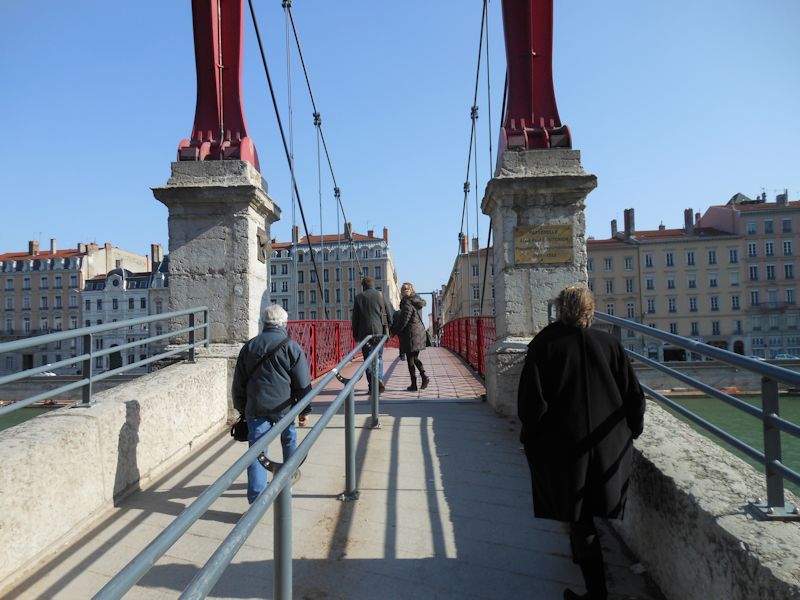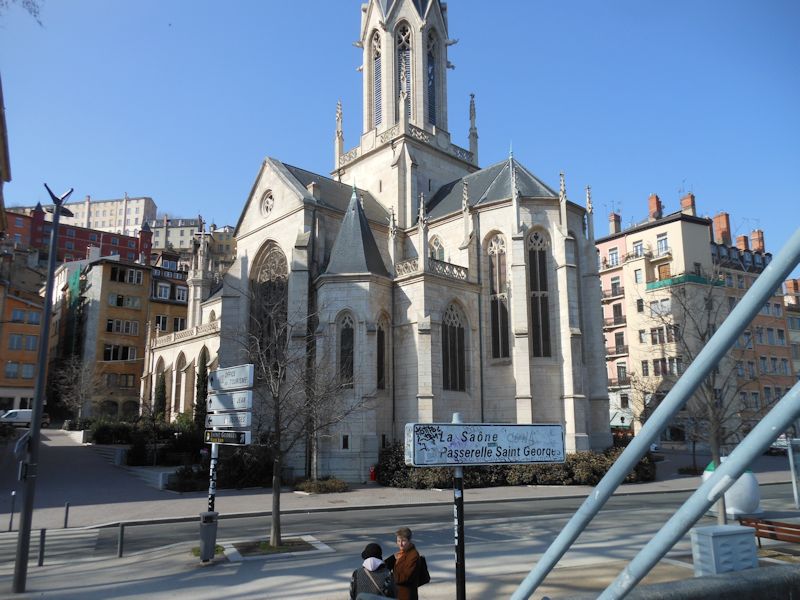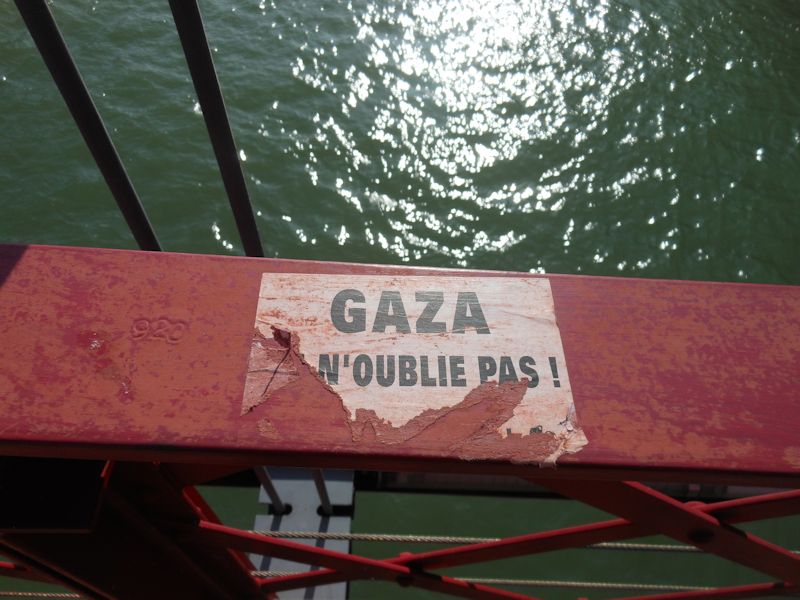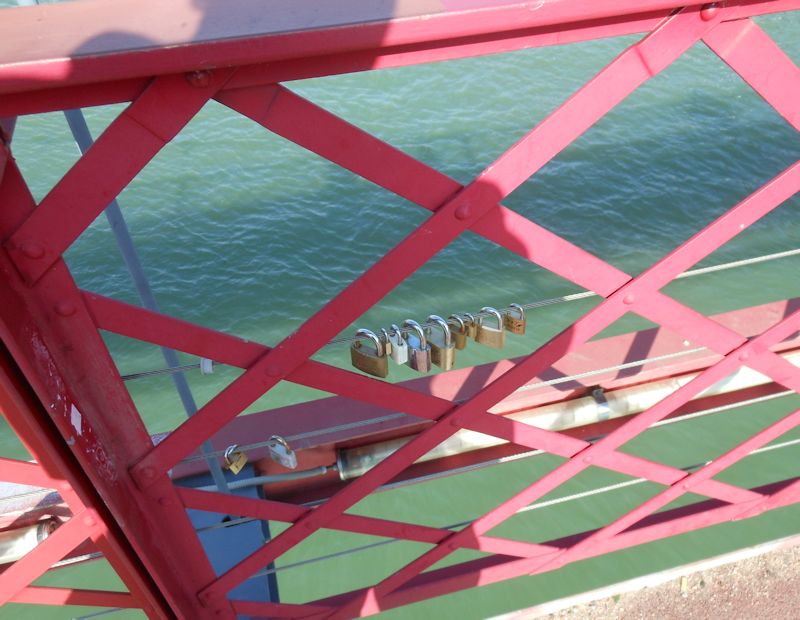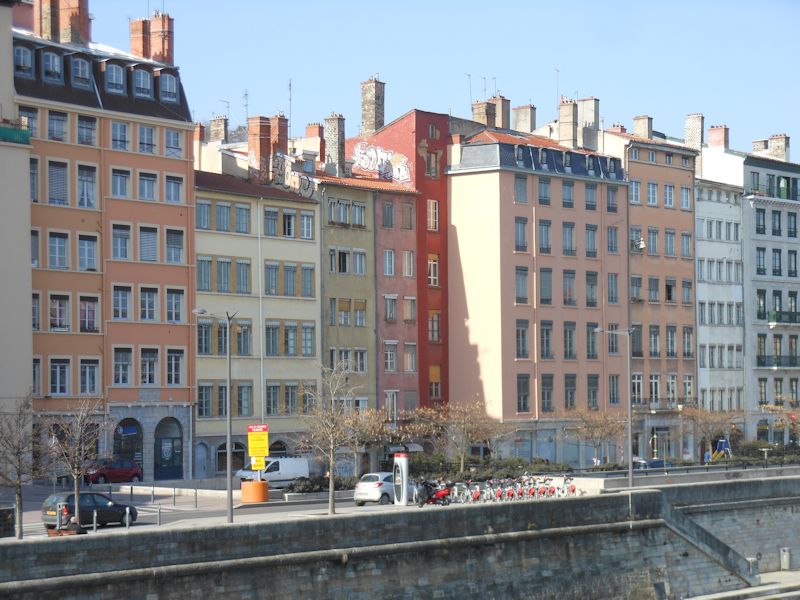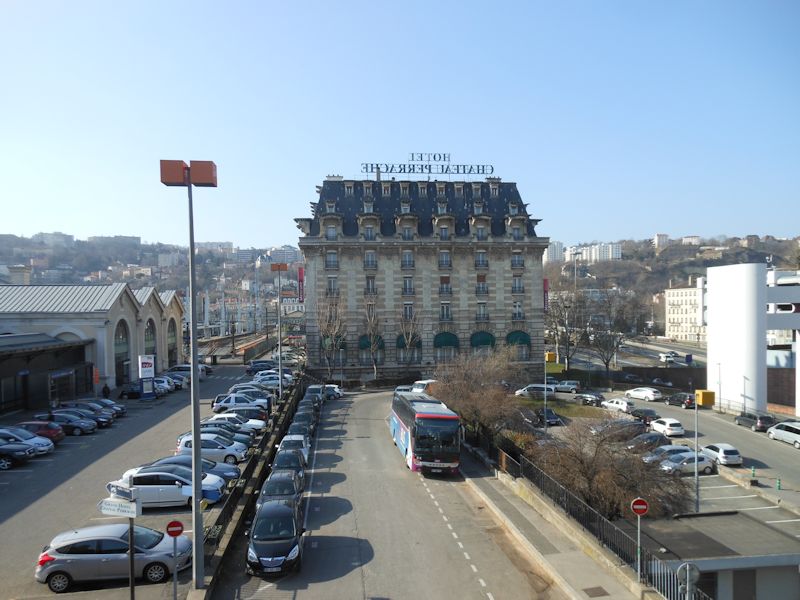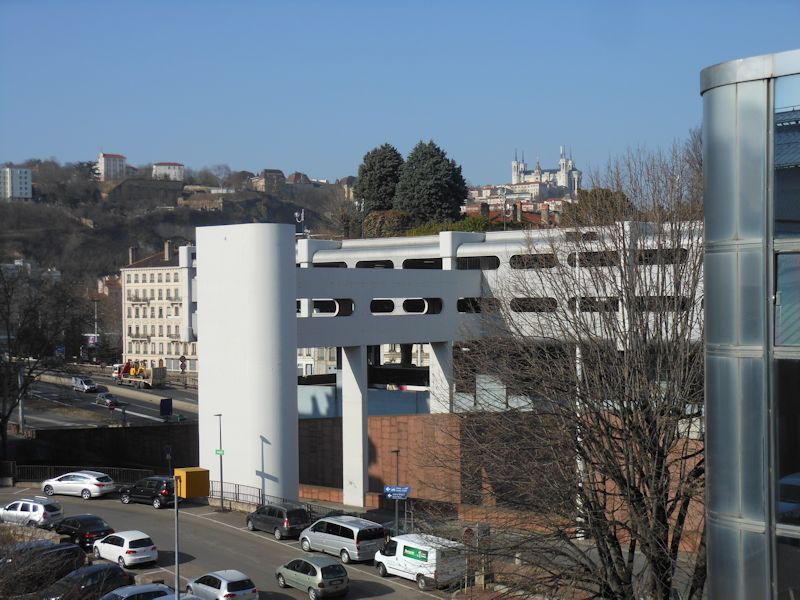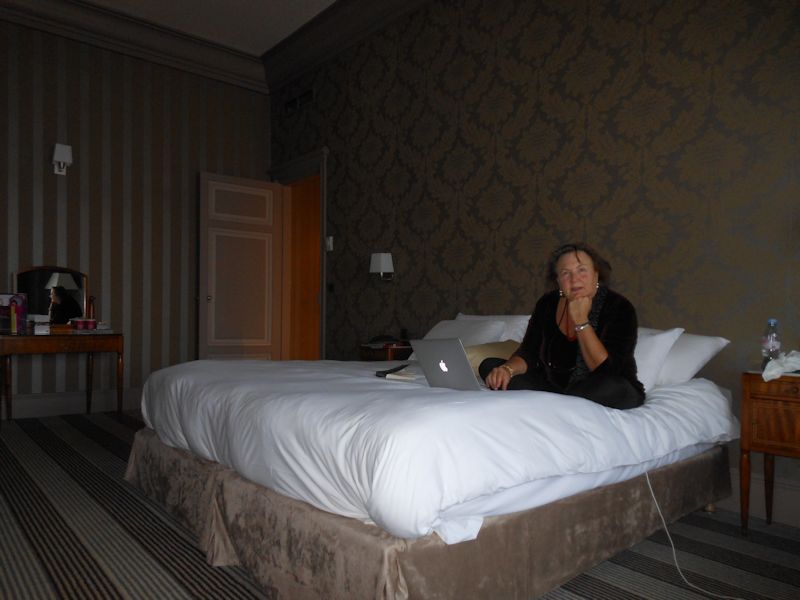Lyon, France, a two-hours' inexpensive train ride
and a bundle of fun
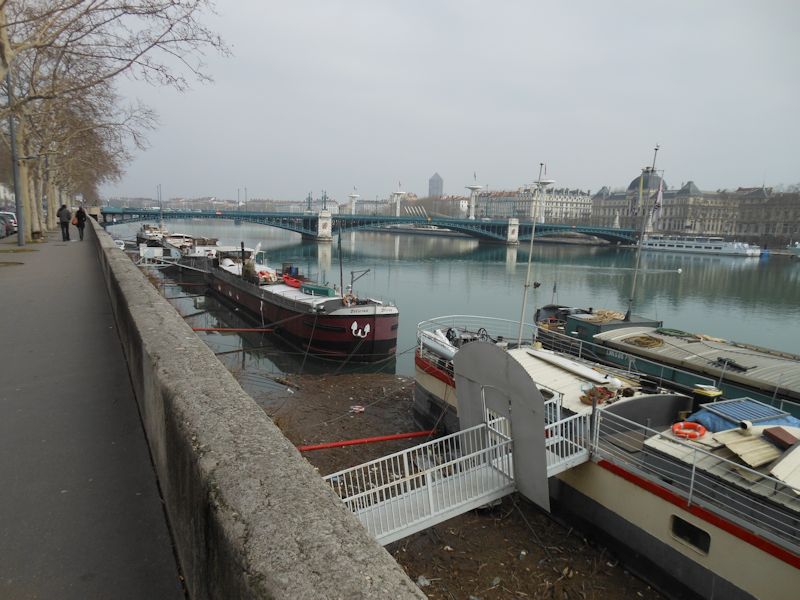
Barges and houseboat barges tied up along the mighty Rhône as we're crossing over to the eastern bank for another day of fun -- so much fun, in fact, that we've booked over for another day in our longer weekend.
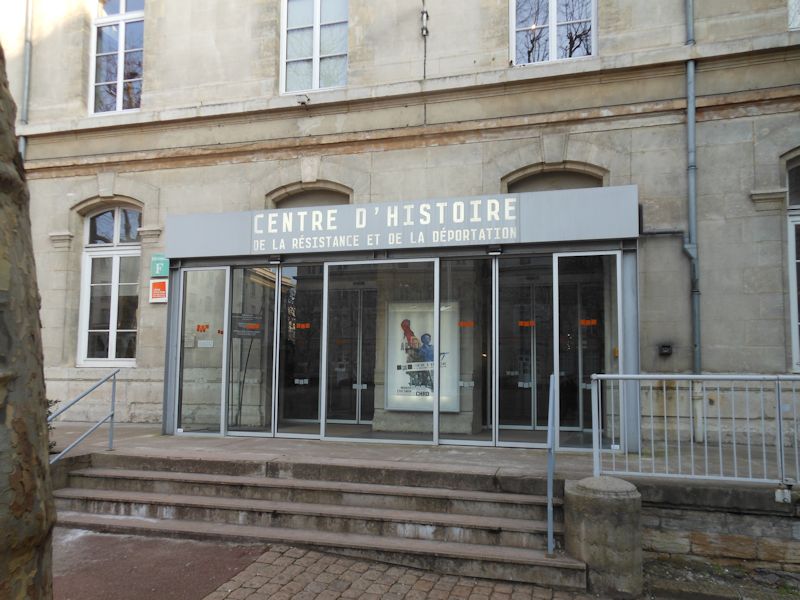
And today's our day for the museum of the Resistance and Deportation. It's a wonderful museum if you're interested in the French resistance movement, as Lyon was a centre both of the Vichy administation and the German occupation of the south after that broke down, and of the various Resistance movements from very different ideological backgrounds.
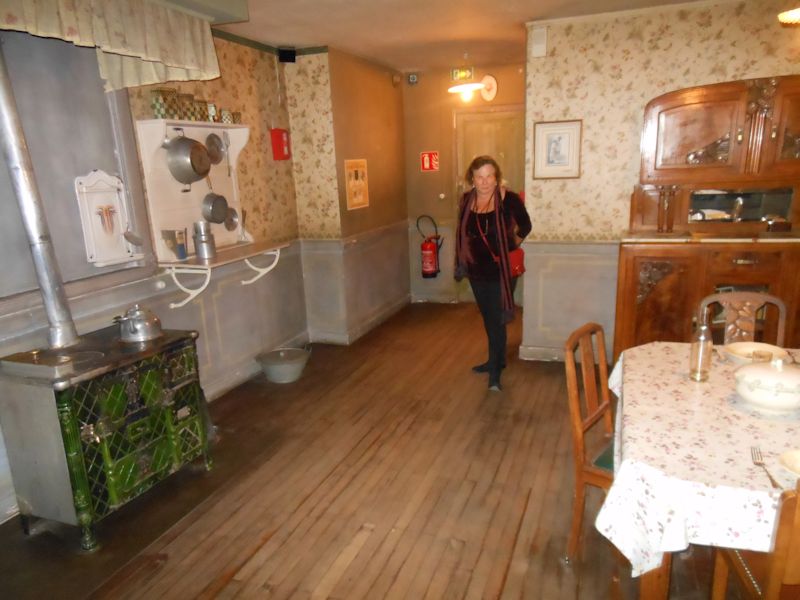
The top floor consists largely of displays and texts on various movements and individuals, including Jean Moulin of course, with a lot of A/V short films and interviews with participants, photographs and documents, and a 45-minute film (subtitled in English) about the 1987 trial of Klaus Barbie, the Gestapo's Butcher of Lyon, who was spirited to safety after the war by the US intelligence services. This, however, is a simulated room from a French house in 1943 with, in the next room, an original clandestine printing press.
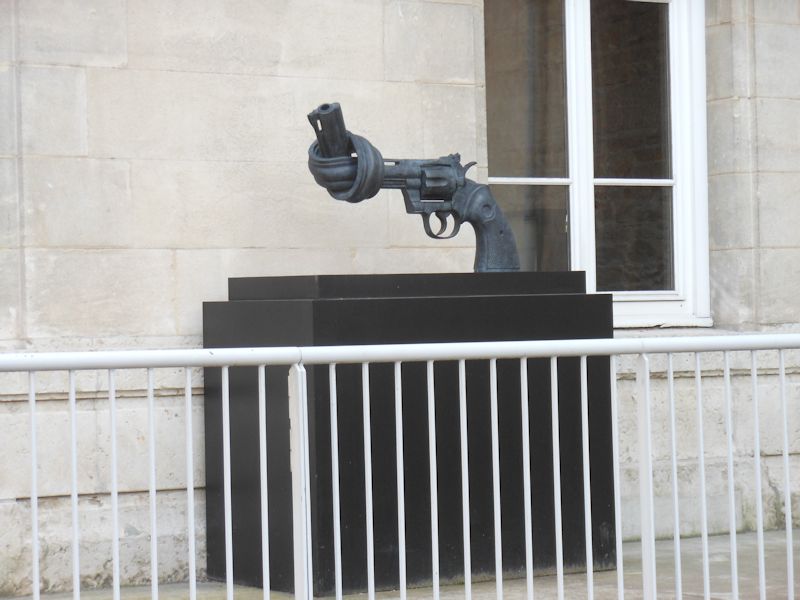
Well put.
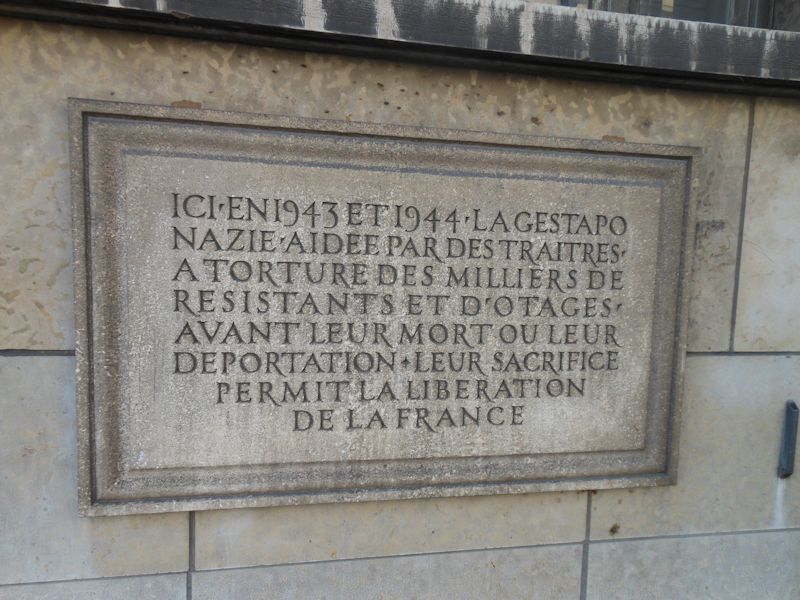
They've picked an appropriate building for their Centre for the History of the Resistance.
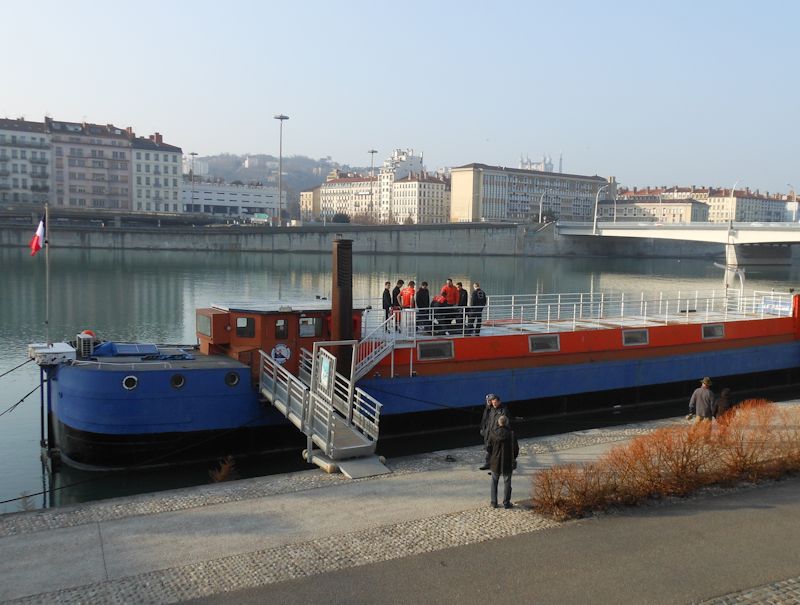
Now for a walk down the Rhône to "The Confluence". Those guys are learning how to move someone with a broken back or neck (in the Swiss Protection Civile we had to train in a simulated sewer system, this is much nicer).
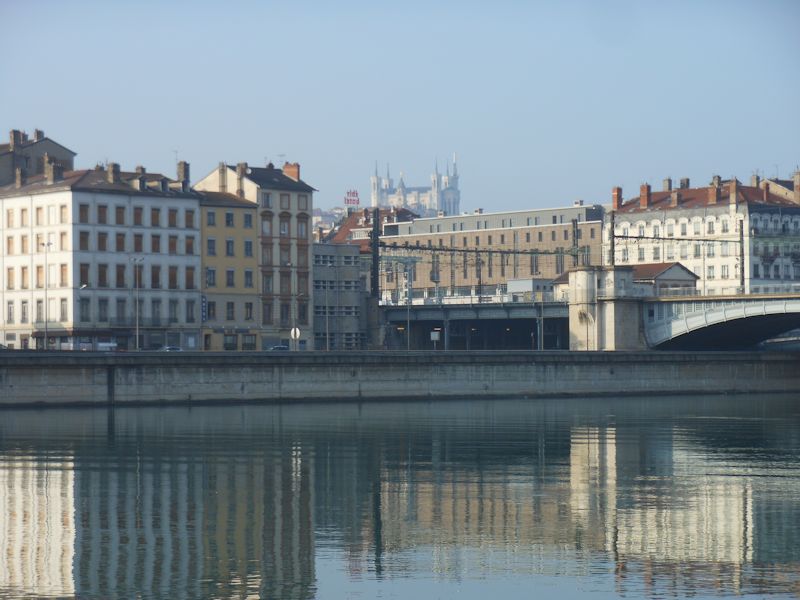
Across the Rhône and the Presqu'île, the distinctive and awful Basilica of Nôtre Dame de Fourvière up on the hilltop, site of Trajan's original Roman forum and now just an extravagant privately-funded church from the 1880s.
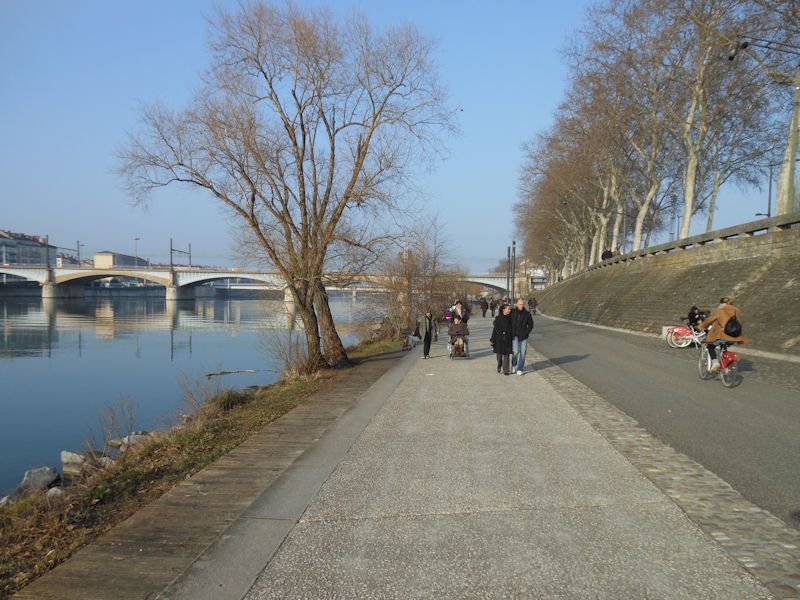
Aimable family outings along the Rhône. Now we'll cross over at the last bridge before "The Confluence" of the rivers and start back up the Presqu'île . . .
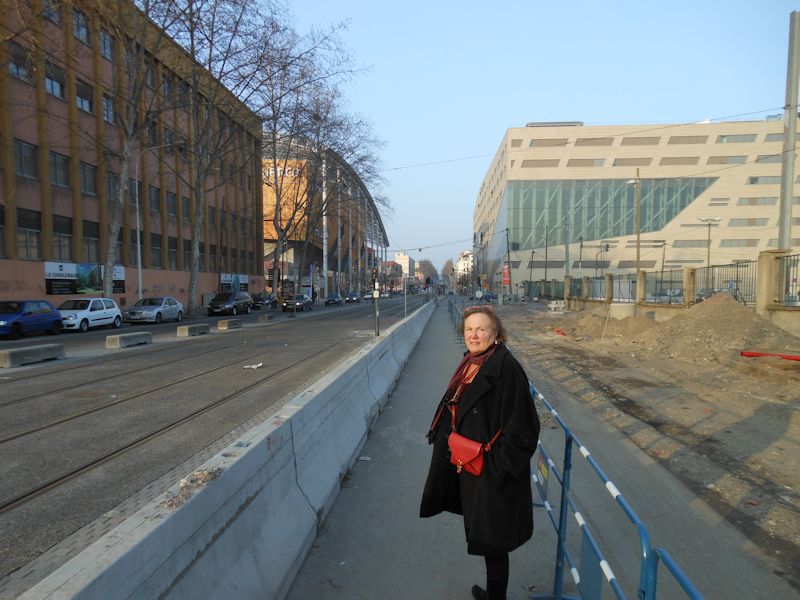
. . . though some of the scenic surroundings are not as attractive over this way.
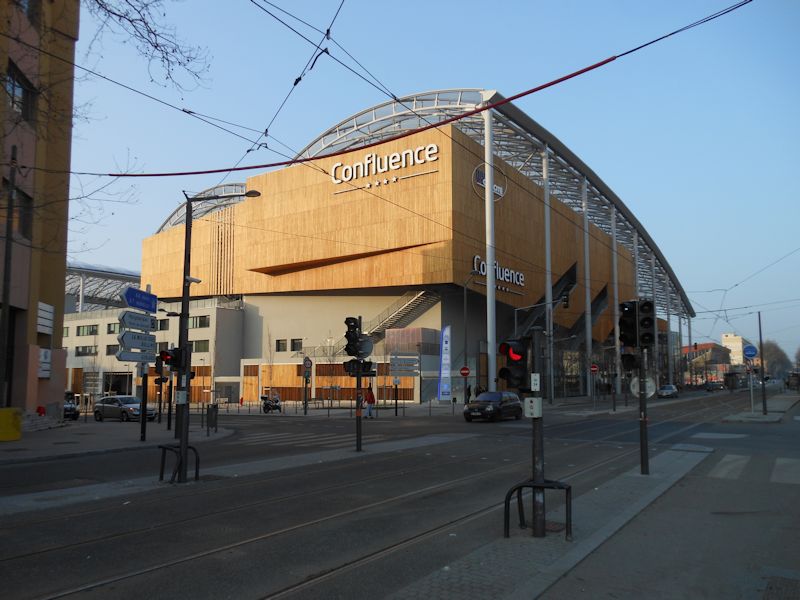
Until we happen upon the Confluence Centre, a huge, wonderful (if you like fancy malls as much as I do) mall.
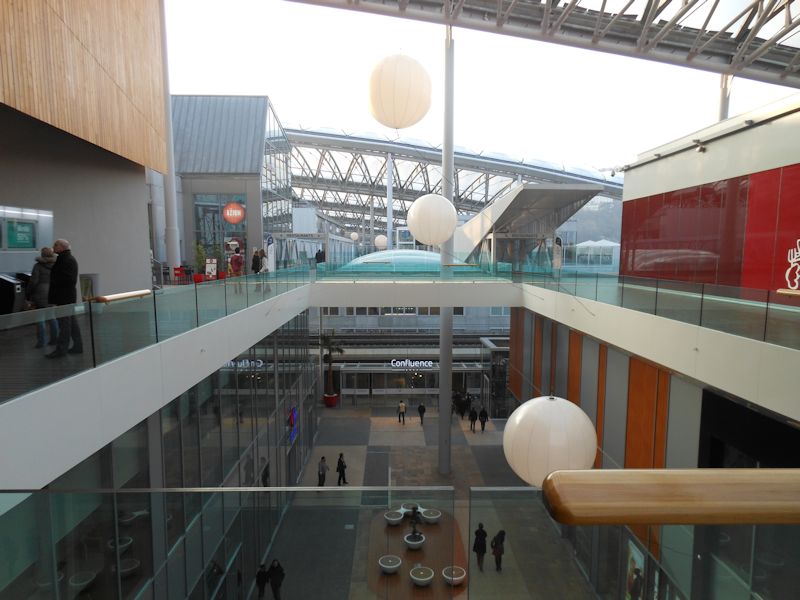
Up in the Confluence Centre, lovely bold architecture (. . . if you like fancy malls as much as I do). [I've only been in two fancy malls in my life, and in Changwon, South Korea, I was similarly overwhelmed and curiously uplifted.]
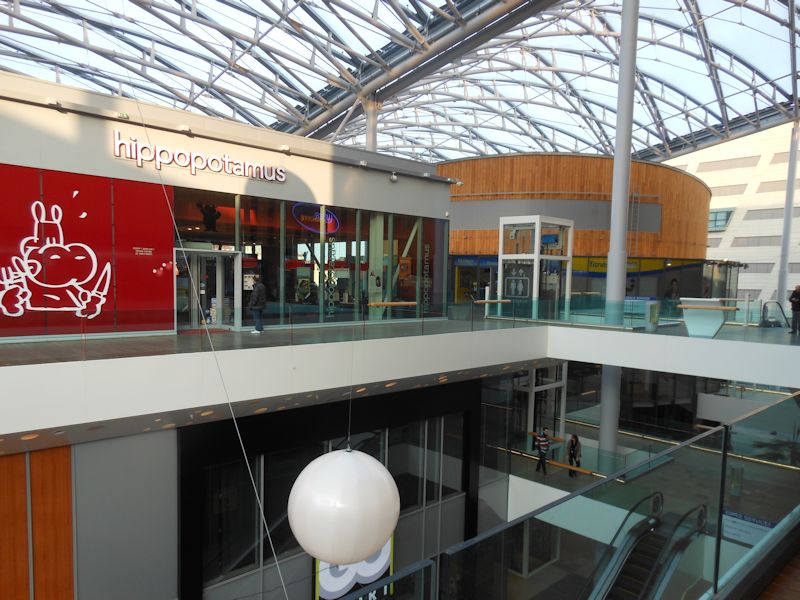
Such excitement
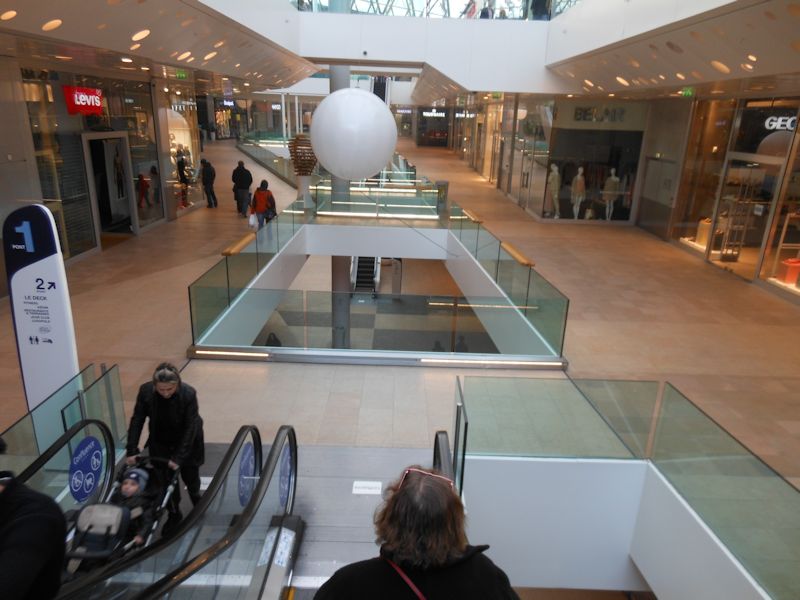
And now, after 20 minutes in the Wokø, where I had a teensy coffee and my companion had a collection of spring rolls and other authentic ethnic fried items, we're suitably fortified for the rest of our walk.
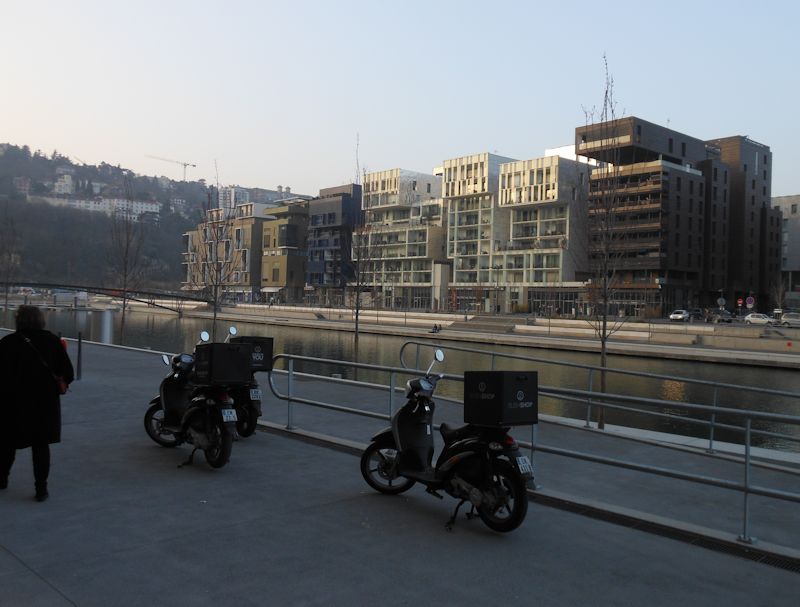
This was evidently the old port area between the rivers, south of the Perrache rail station, and it's all been done up, apparently recently, in interesting ways.
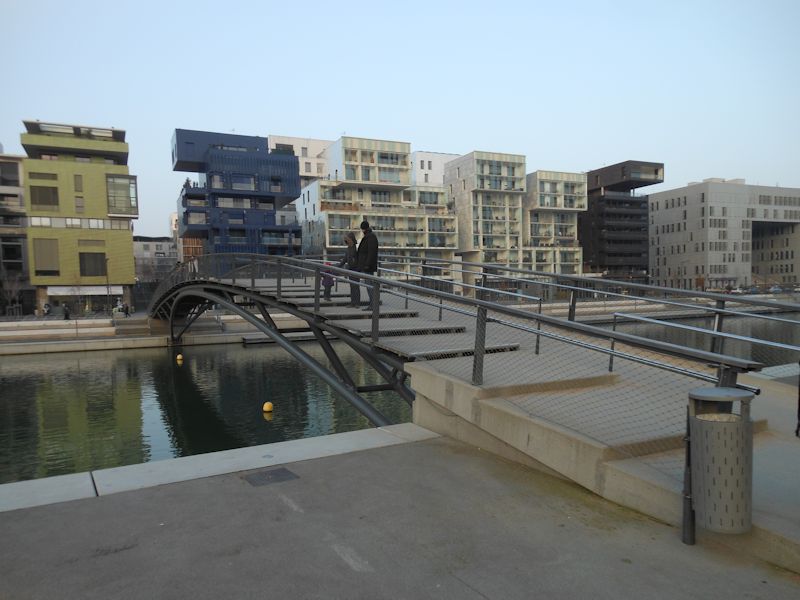
Formidably cantilevered apartment buildings across what must have been a part of the port facilities.
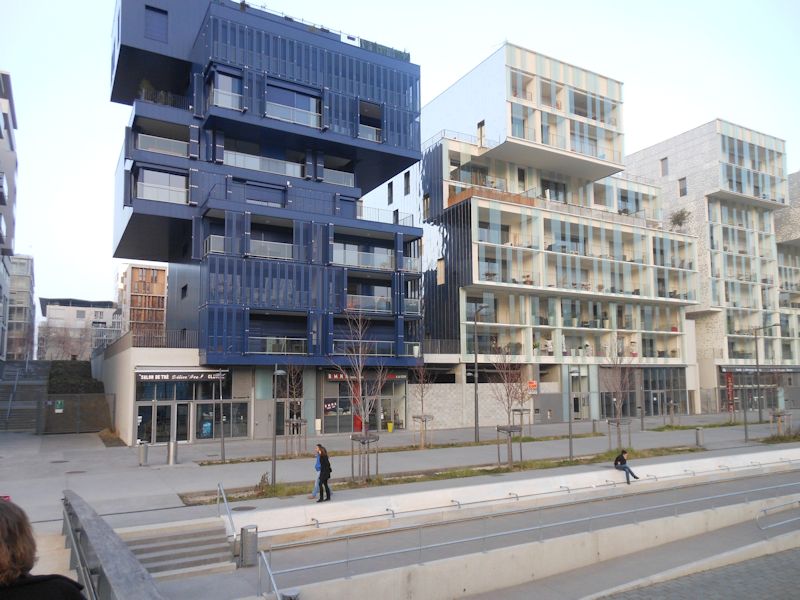
Many may laugh, but we find all this very interesting. (I'd never dream of standing inside one of those apartments, wondering whether the architect had passed all his exams.)
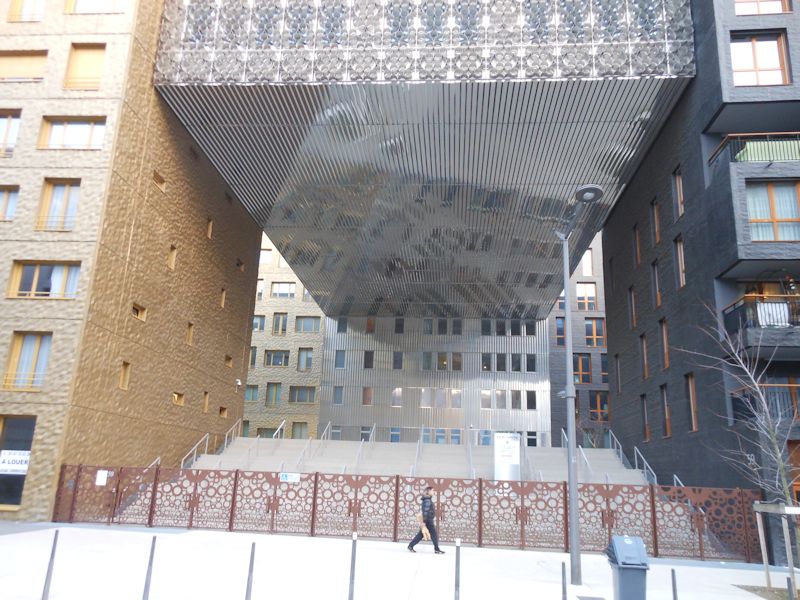
If you're forced to live in a city anyway, why not something like this?
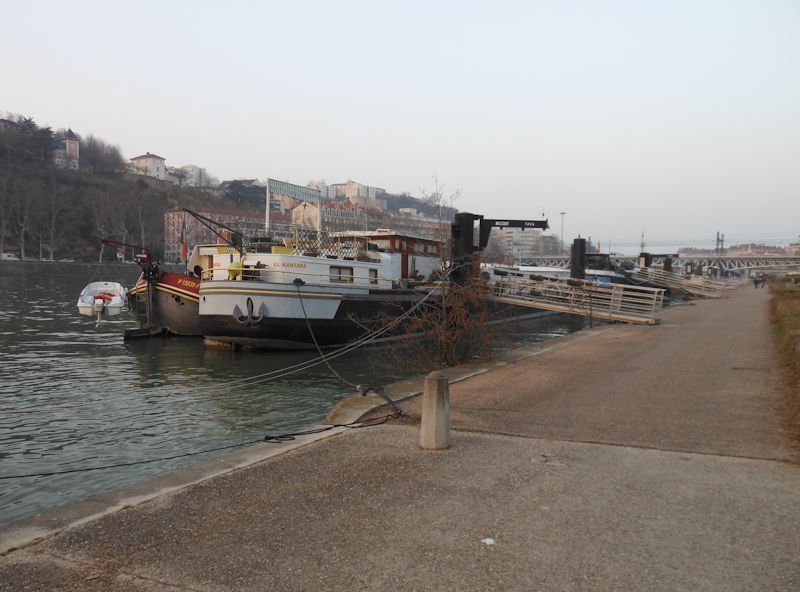
More barges and houseboat barges permanently stashed along the river Saône.
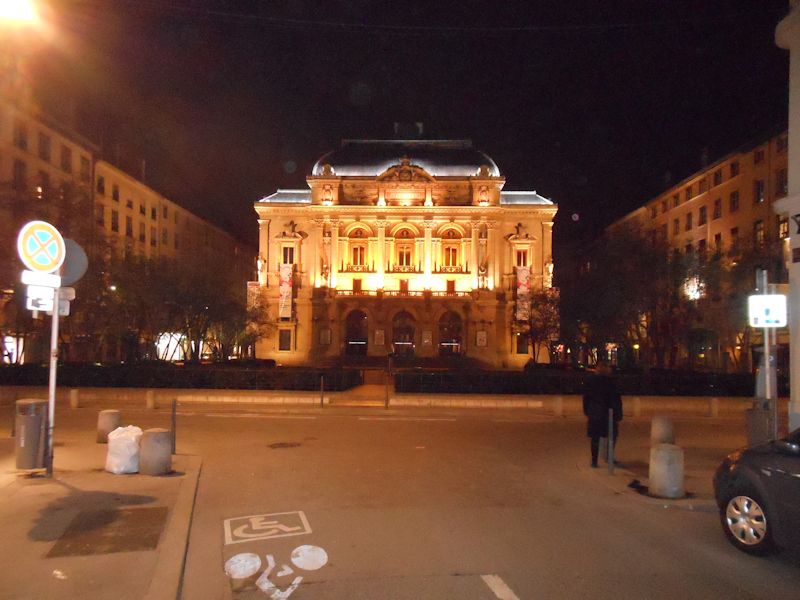
Street scenes
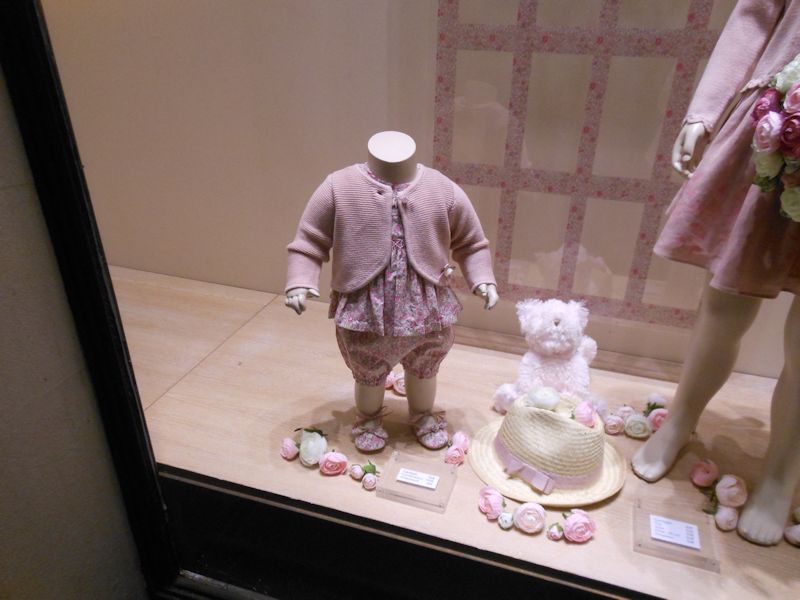
We're out roaming for a suitable restaurant, and it's nostalgia time for Kristin.
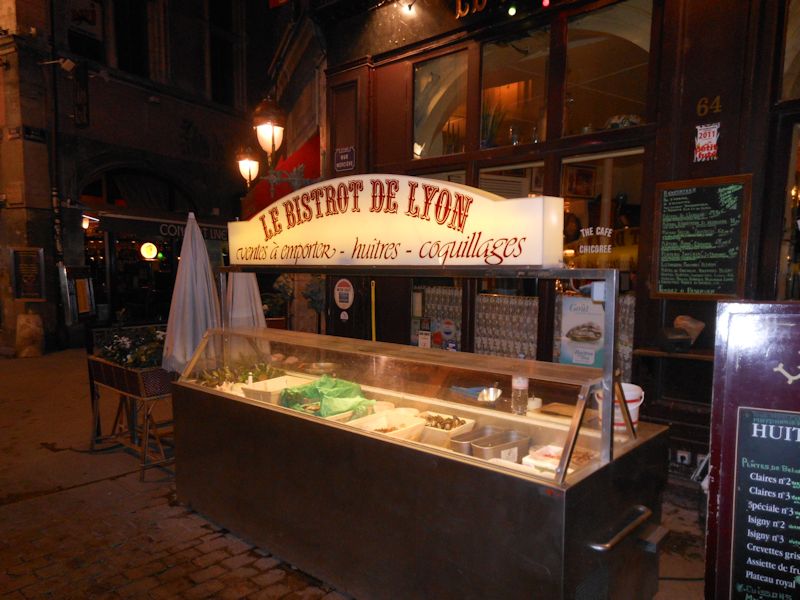
We're getting close!
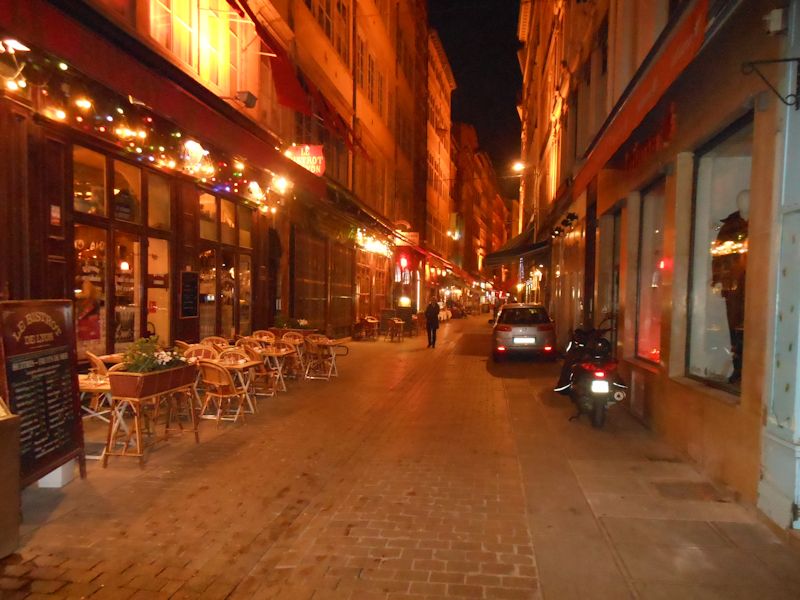
Too many to choose from, in fact. We went to Le Winch (nautical theme) in the Rue Mercière, very good.
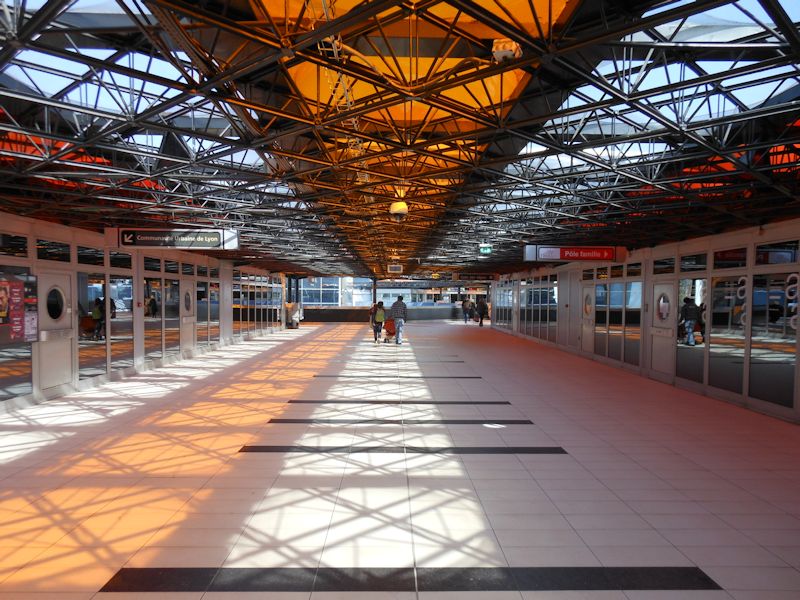
The next day, we're coasting along the walkway from the gare towards the city centre.
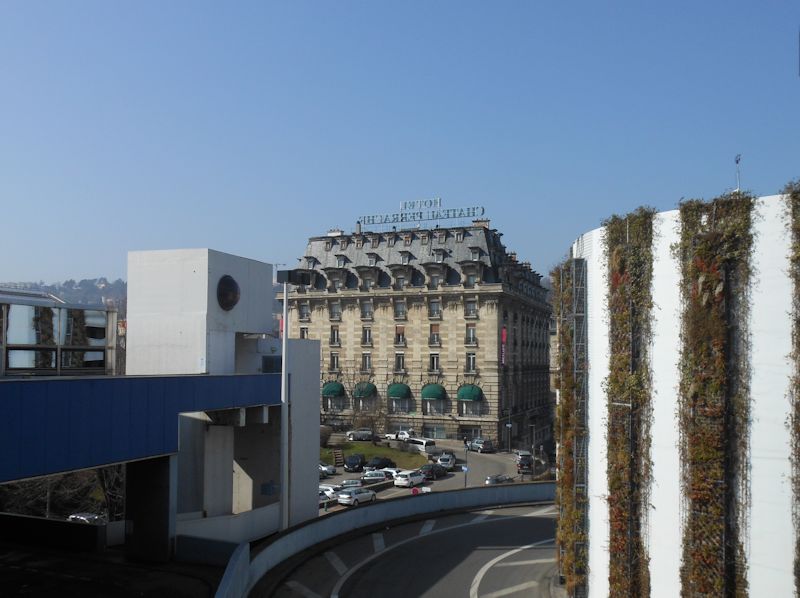
That's our hotel (and Klaus Barbie's hotel), through the parking garages
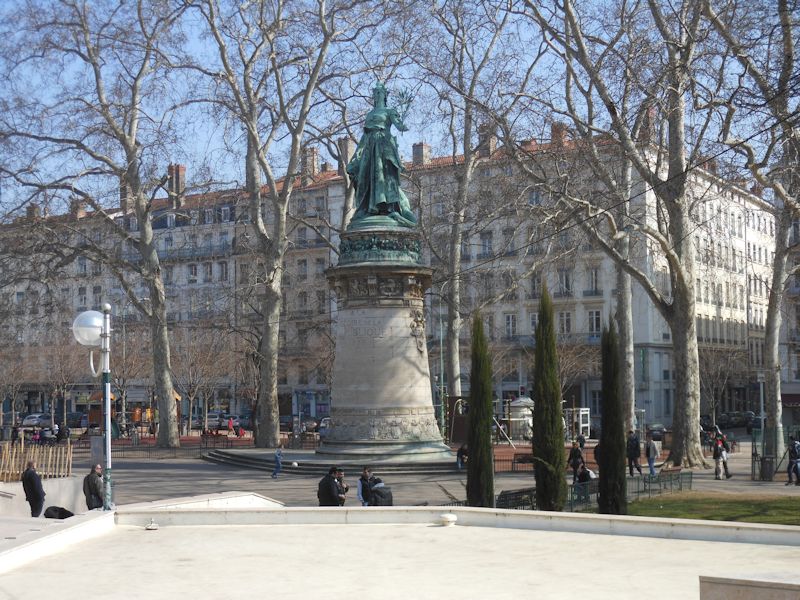
This is the Place Carnot, between the rail station and the centre of town. Heaven knows what that lady is celebrating.
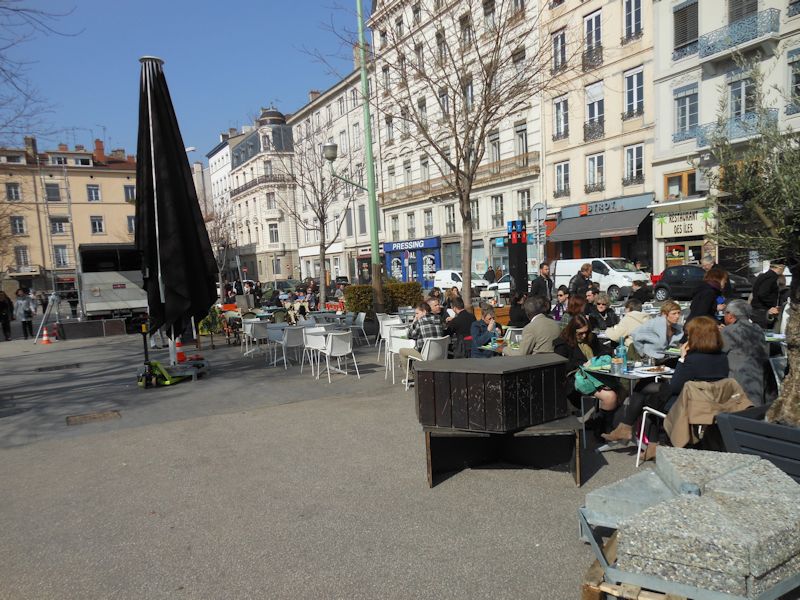
It's only the 4th of March and the sidewalk cafés are already bustling.
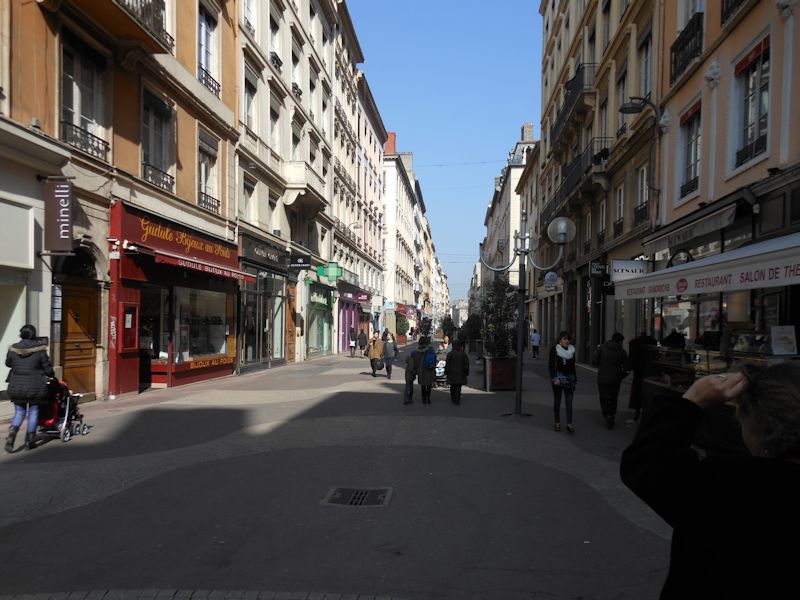
The main shopping thoroughfare, the Rue Victor Hugo, between the rail station and the Place Bellecour
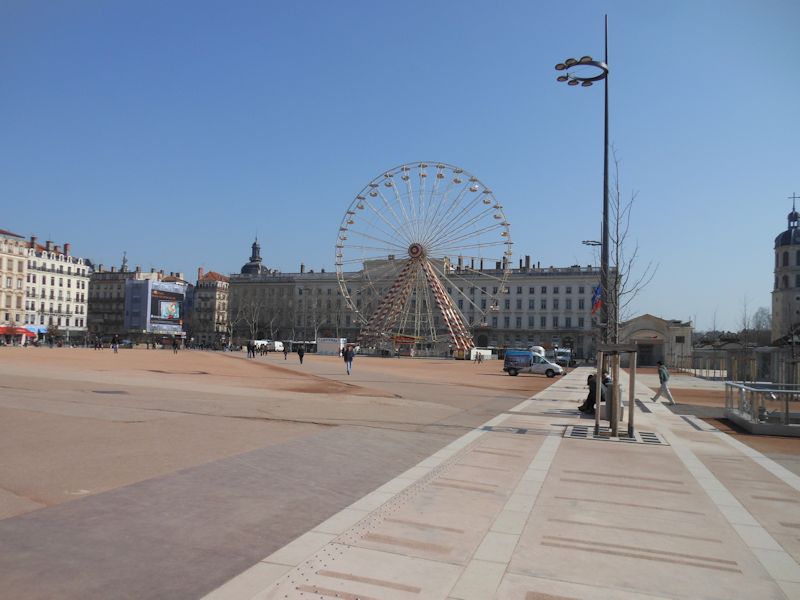
The Place Bellecour and the famous Ferris wheel
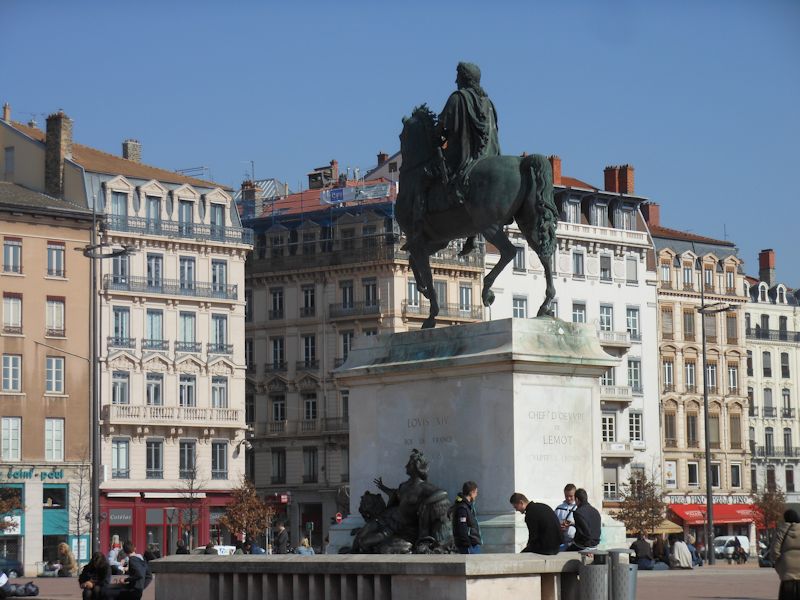
And a formidable statue of Louis XIV, dating from 1825 to replace the 1713 statue that the rude revolutionaries knocked over in 1793 (like the statue of Saddam Hussein in 2003).
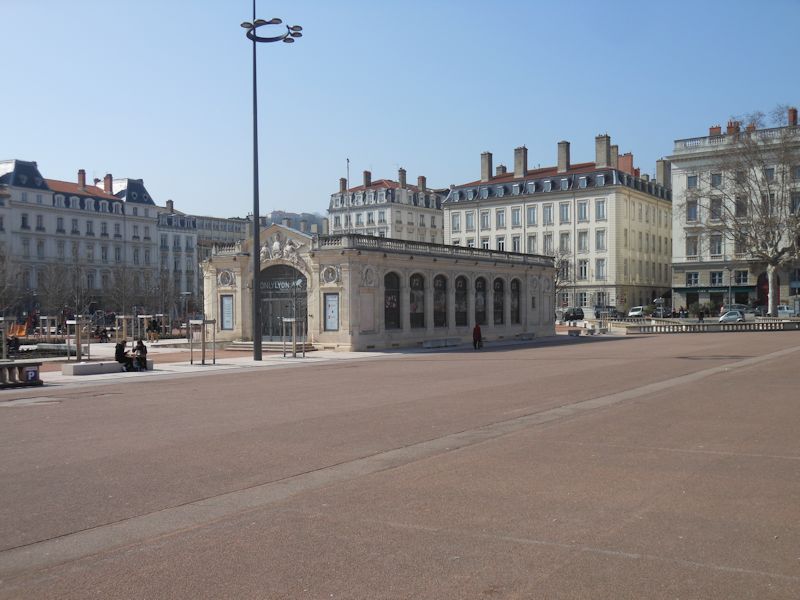
There are two pavilions in the Place Bellecour -- the tourist office and a small art gallery.
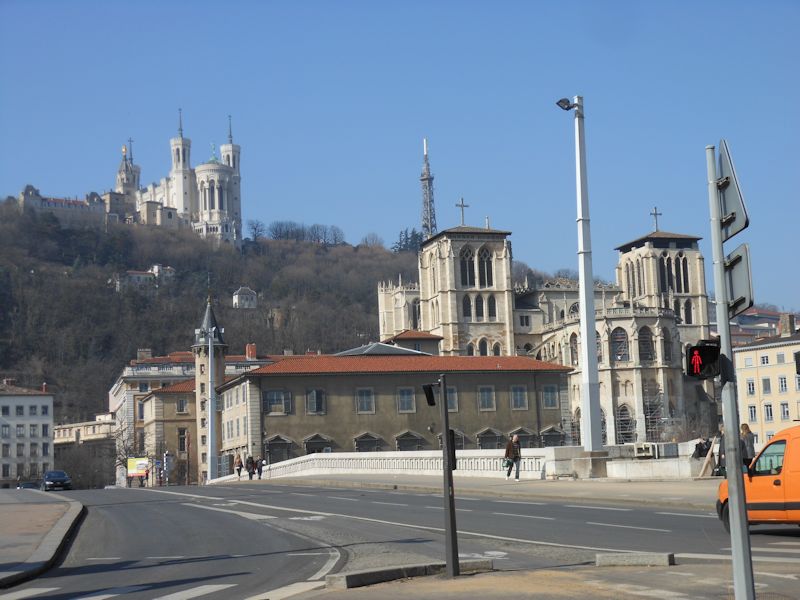
The pretentious Basilica of Nôtre Dame de Fourvière on the hilltop, and the very intriguing Cathedral of St John below it. Above the cathedral in this scene pokes the 'Tour métallique de Fourvière', built in 1892 and meant to be Lyon's answer to the Tour d'Eiffel in its competitor city. It once had a restaurant and an elevator to the top, but now it just broadcasts television shows round the neighborhood. (Eiffel Tower was probably a better choice of name than "Metal Tower".)
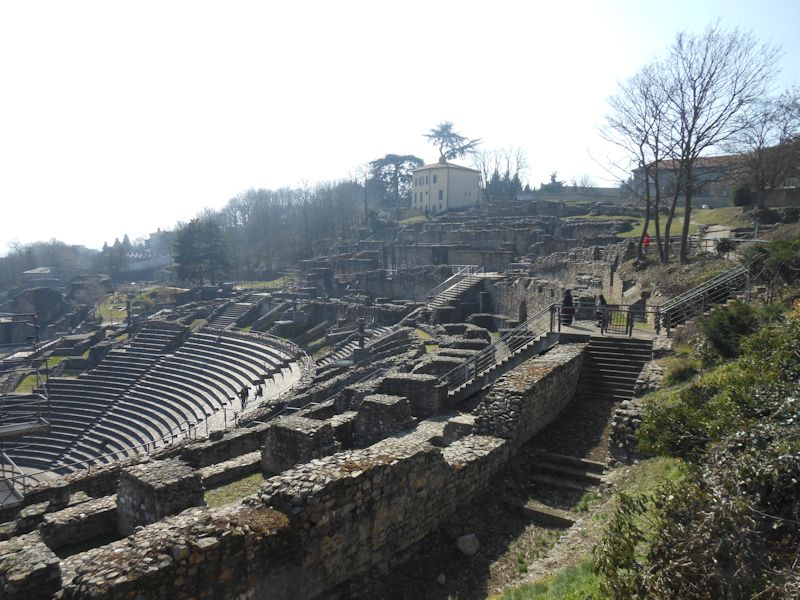
Here on the Fourvière hill, we're at the site of the original Roman colony of Lugdunum to visit the esteemed Gallo-Roman museum, which of course is closed today. But the archaeological park alongside it is not closed; in fact it's a city park with picnic benches, so let's look around.
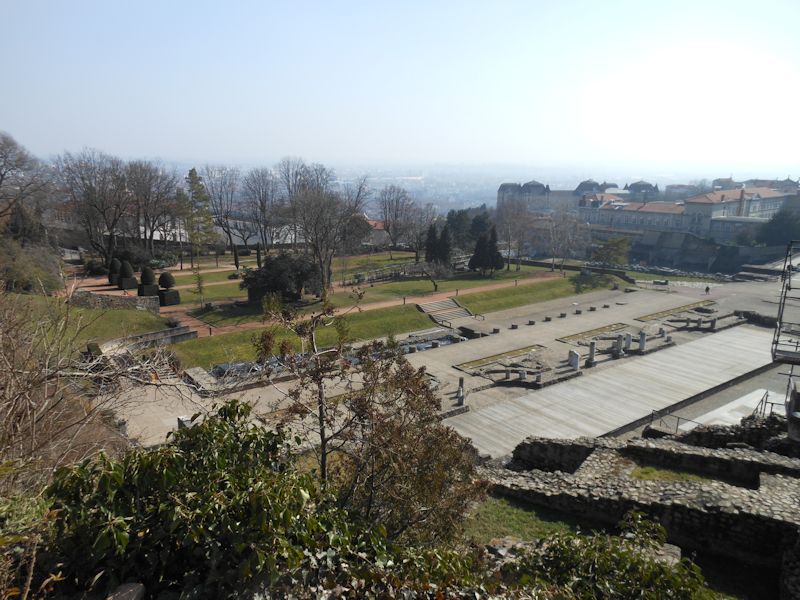
Built in 15 B.C. or so, this was one of the largest theatres in Roman Gaul -- it presently holds nearly 5,000 spectators but the missing second tier of seats would have expanded that to 11,000 people.
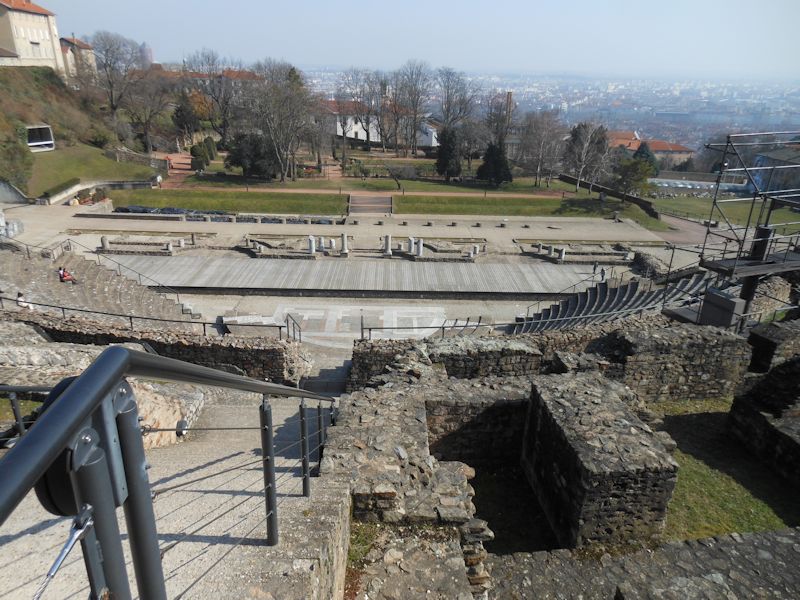
Behind those broken mini-pillars there was a 30m (98 foot) backwall with the tiring house, as Shakespeare would have called it. The stones of it were carried off to build the city below.
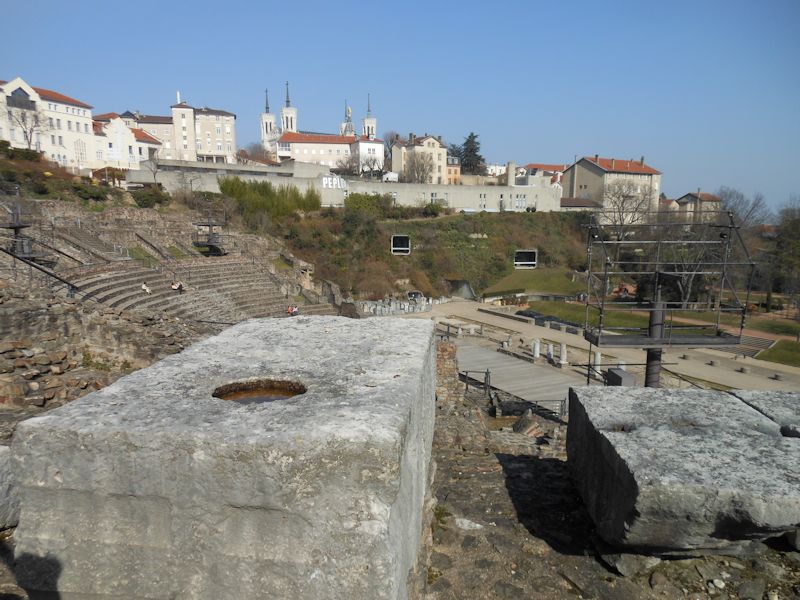
The Musée de la Civilisation Gallo-Romaine is in that long grey building tucked in along the brow of the hill, with the Basilica Notre-Dame above it. The word "Peplum" ['tunic' in Greek] advertises its current exhibition of memorabilia from the recreations of the classical era in Italian cinema, known as the Peplum or low-budget Sword-and-Sandals genre of Italian epic movies of the early 1960s.
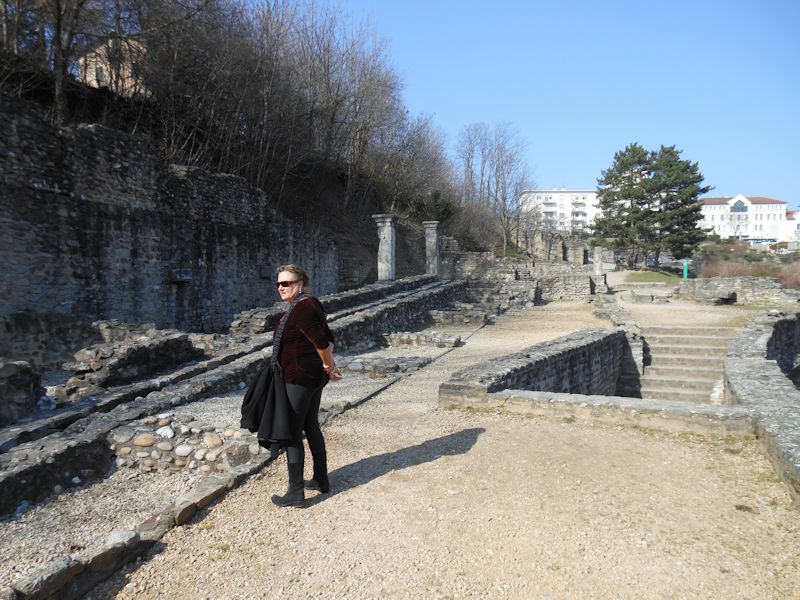
Kristin and an ancient drainage ditch
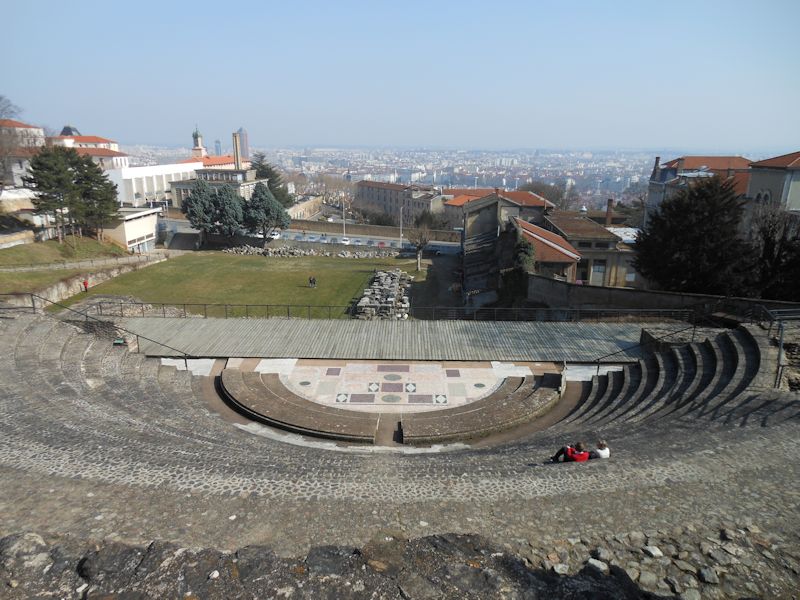
Just next to the theatre is the odeon, for musical and oratorical performances, which was covered with a wooden ceiling back in the day for acoustical purposes.
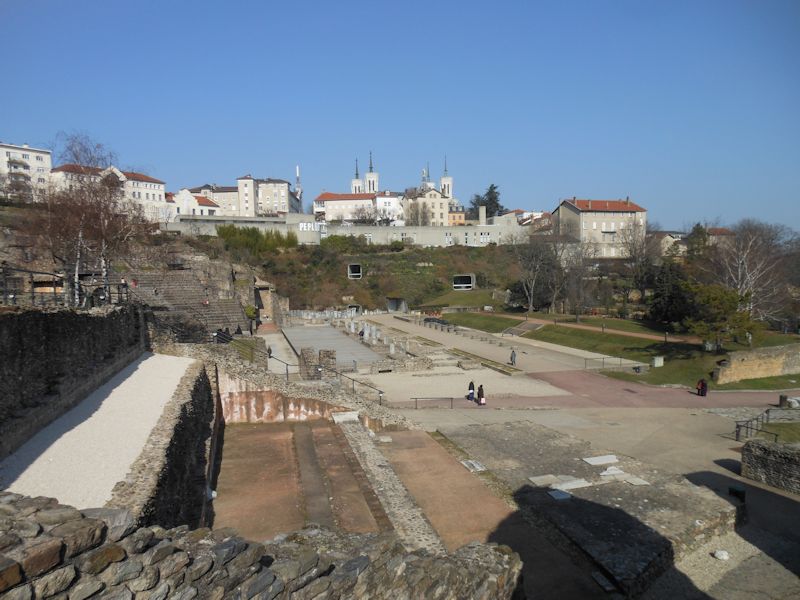
A look at the theatre and museum from the odeon
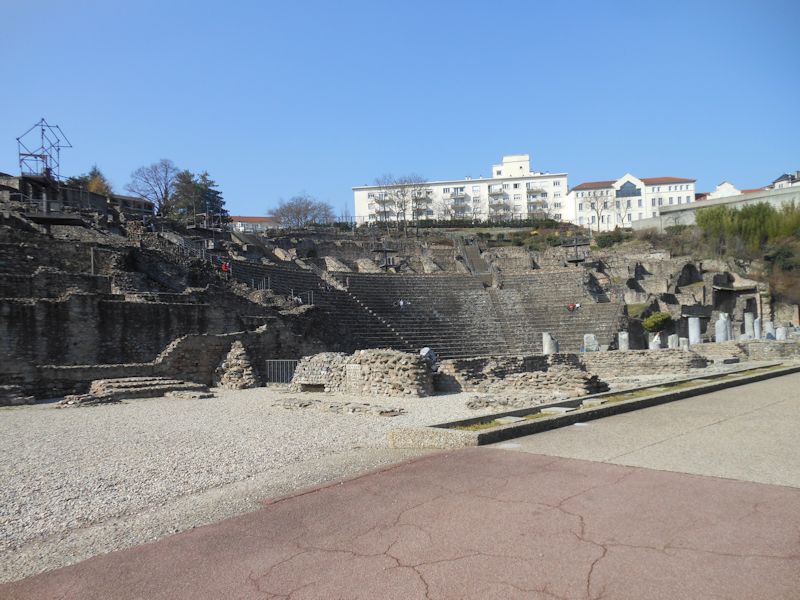
The theatre and some of the ancient residential areas above it on the left
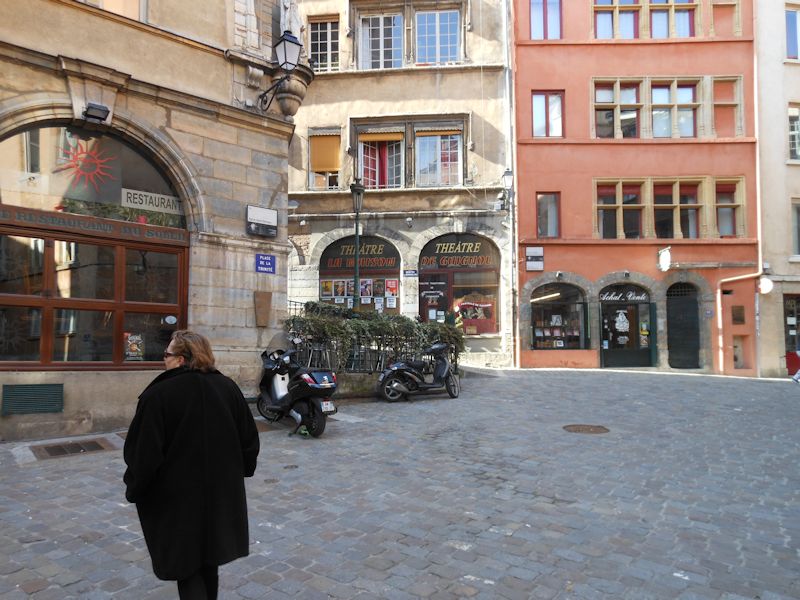
The Theatre of Guignol -- the popular early 19th century tradition of Guignol marionnette theatre began here in Lyon. The cinema industry, invented by the Lumière brothers in 1895, has got its own museum here as well, but we had to give it a miss.
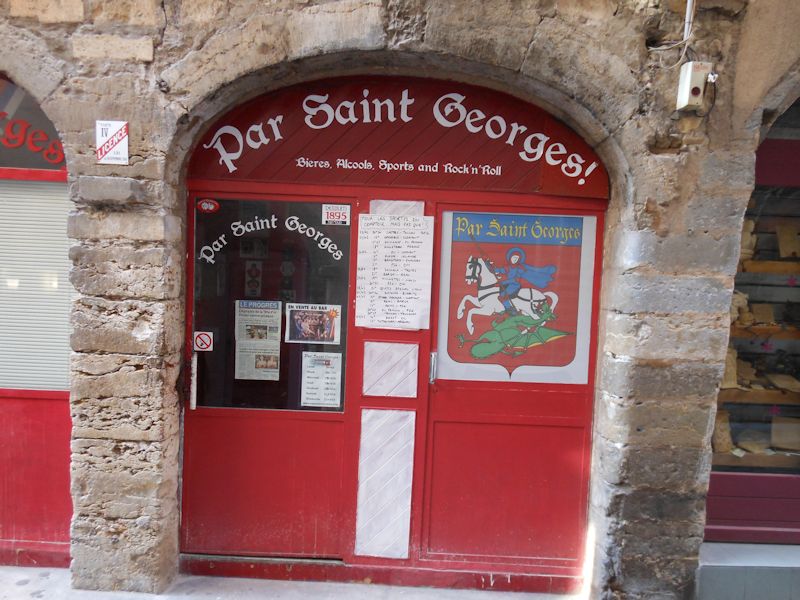
St Georges: Bières, Alcools, Sports and Rock'n'Roll!!!!
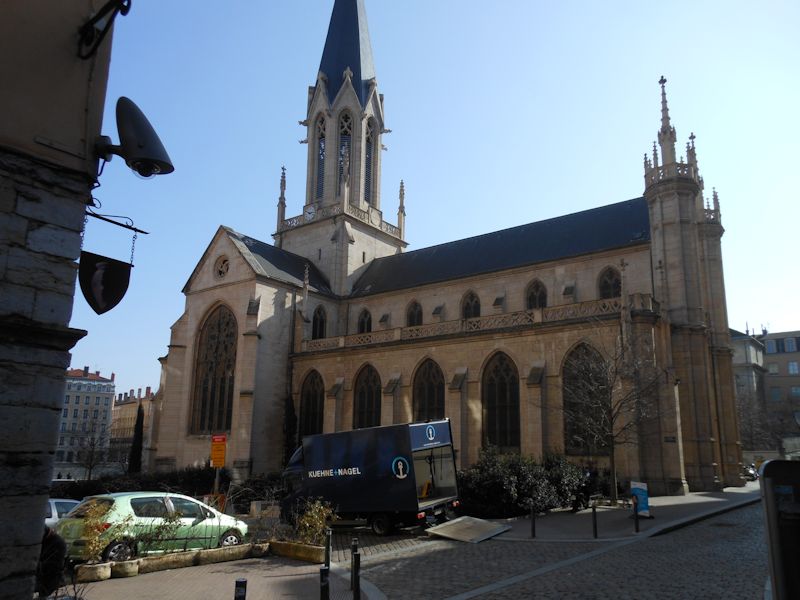
The interesting church of St-George in the Vieux Lyon quarter. The original church, dating from 550, was wrecked by Saracens in the 8th century, but restored in the 9th. It was for years a base for the Knights of Malta, the Knights Hospitaller of St John of Jerusalem, until by the time of the Revolution it was being used as a barn.
The Église St-Georges was subsequently renovated in a neogothic style in the 1840s (by the same chap who designed the Fourvière basilica on top of the hill), abandoned in the 1980s, and is now back in service since 2007.
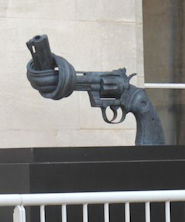 Dwight Peck's personal website
Dwight Peck's personal website












































